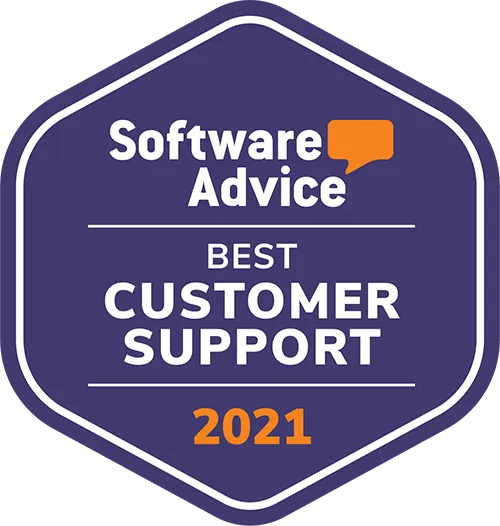It wasn’t a hard choice to select SmartSurvey. Not only did they understand what we were looking to achieve right from the start, they presented a solution that represented everything we needed.
How Long Should a Survey Be?
How Long Should a Survey Be?

Getting your survey length just right can be an extremely tricky thing to do. Too long and you risk losing peoples’ interest and them abandoning your survey. Too short and you may leave respondents feeling that you’ve not given them sufficient space to say what they want, or worse still that you’re trying to steer their answers in a particular direction.
The most challenging part is that there are no hard or fast rules about survey length. Besides the industry that you work in and your target audience, many other factors could determine this, from your objectives and the data you need to the frequency of your survey and the types of questions you’re looking to ask.
However, when it comes to survey length best practices, one of the area’s most likely to have the biggest impact concerns the number of questions you’re looking to ask.
How many questions?
The dilemma of knowing how many questions should be in a questionnaire is one that many researchers struggle with when they’re trying to devise questions for surveys.
While there is no magic number, you can get a better feel for this by considering how long your survey will take to complete and how your question types may affect this, as certain questions such as open-ended or free text questions will take longer to answer.
Broadly speaking you must try to keep your survey completion time to under 10 minutes, and even shorter when you’re trying to obtain information in some areas such as customer satisfaction.
Subsequently, you should aim to include 10 – 15 survey questions, or fewer if you’re using questions types that can take longer to answer, otherwise you run the risk of survey fatigue. It’s also important to note that in general for longer surveys participants tend to answer each question much quicker than they would for a shorter survey, which can result in them being far less attentive and negatively affecting the accuracy of your findings.
Question selection
When it comes to the different types of questions you could potentially ask in your survey, it’s good to be aware of the full range of options available to you before you design your questionnaire. This is crucial, as their simplicity or complexity can have a bearing on how long it takes a respondent to complete each one and therefore how many questions your survey should have in total.
At the very highest-level, questions typically fall into one of two camps open or closed questions. While open questions are qualitative in nature and aim to give respondents as much space as they need to express their feelings when answering a question, closed questions are designed to gather data much faster with respondents therefore typically asked to provide either Yes or No answers, or to select their answers from a pre-set list of options.
Closed survey questions are available in a wide range of formats. While multiple choice questions are typically presented to respondents with a single select or multi-select option, other formats such as Likert scale, plus rating and ranking questions, can give researchers more information with respondents asked to highlight how much they like, rate or rank something against the other options provided.
Other more niche question variants include dichotomous questions, where only two possible answer options typically ‘yes’ or ‘no’ or ‘true’ or ‘false’ are provided, while hypothetical questions look to capture respondents’ opinions on imagined situations.
In addition, closed questions can also be presented as matrix questions, where an array of possible responses is displayed to the respondent in a grid, where only one response can be selected for each row of the grid. This can work extremely well when you’re asking the same question over and over again, about different topics.
For example, in a hospitality survey you may want to know on a scale of 1-10 how happy a respondent was about various aspects of a hotel visit, from location and cleanliness to the quality of food and friendliness of the staff, making this a very effective question to ask.
Survey fatigue and survey response rates
If not handled effectively, the issue of how many questions should be in a survey can cause problems in other areas, most notably survey fatigue, which can be detrimental to your survey response rates, as people abandon survey due to frustration over how many questions are in your questionnaire. However, there are ways you can help to reduce this:
- Communicate exactly why their feedback is needed: if respondents know right from the outset how valuable their feedback is and what a positive difference it will make, they will be more likely to go on and complete the survey, even if it’s slightly longer than they hoped.
- Give them some indication of how long it will take to complete: the more specific you’re able to be in meeting your respondent’s time commitment expectations the more likely they will be to provide their feedback. Think about including a progress bar with estimates of how much longer your survey will take to complete, which can be really helpful to people as they are progressing through your survey.
- Only ask the most relevant questions: it may sound obvious, but only ask the most essential questions, and certainly don’t include any that you’re pretty confident you already know the answer to.
- Offer to share your results: when you’re open and respondents know they’ll have the chance to see what actions you took as a result of their feedback; they’ll be more likely to get to the end of your survey.
Survey frequency
Linked very closely to survey fatigue and your survey response rate is the frequency with which you issue your surveys.
Whatever survey you’re looking to distribute whether it’s an employee engagement or a customer satisfaction survey, you need to think carefully about how frequently you send it, as over-surveying your target audience can leave them feeling overwhelmed, which can negatively affect your response rate and the value you obtain from it.
If you still think you need to survey your audience regularly, then think about sending them a much briefer one. For employees, a pulse survey can be a really effective way of achieving this as it designed to provide a quick check-in and snapshot of how your employees are feeling, using just one or a few employee pulse questions. Similarly, for a customer audience you may think about issuing them with a micro-survey, which only includes a couple of questions at the very most.
For example, a business owner might send out an initial micro-survey to see which new services their customers might be interested in. Let’s say that the majority of the customers that responded were looking for an app development service. The business owner could then follow up with those exact customers to gather more information on project ideas and timelines.
From this the business owner would be able to better gauge interest, determine timelines and assess which skills they might need to look for in a new hire, in order to cover this new service.
Your survey objectives
Whatever the objectives for running your survey, whether you’re trying to gauge how satisfied your staff are with their line manager, or you’re looking to elicit the views of your customers about your product, targeting different audiences and collecting data about different things can affect the length of your survey.
Your target audience
Consider the potentially different audiences you might be looking to target with different consumer products.
Let’s say with product one you were looking to gain the views of busy working mums, as opposed to product two, which you were targeting towards a much older and mainly retired audience. Given that the audience for product one would be far less likely to have the same available time than that for product two, it would make sense to keep your survey aimed at product one as short as possible in order to maximise your response rate.
How invested is your audience in your survey?
While you’ll always be looking to make your survey as appealing as you can, you should also consider how it directly impacts your audience, as irrespective of its length, respondents are more likely to complete surveys when it’s clear that they will directly benefit as a result of their participation.
The data you’re looking to collect
It also stands to reason that the more in-depth your research and the more you need to investigate and potentially take actions on, then the greater the number of questions you’re likely to include. Let’s consider some examples to help better illustrate the points outlined.
Let’s say you were a manufacturer of coffee and were thinking about issuing a fun, informal survey, in order to find out people’s views about what they thought made the perfect cup of coffee. For participants, this could provide an enjoyable way to spend a few minutes, and a source of lively debate around the office. But they would still be unlikely to fill it out if it took more than 10 minutes of their time.
However, from the manufacturers point of view, given that this exercise is most likely to be part of a branding or customer engagement exercise than a full-on market research programme, it would be in their best interests to keep it short anyway, as ultimately the objective is to get more people talking about their brand.
Compare this to an organisation that was looking to run an employee satisfaction survey, to get a better idea of staff happiness throughout the business and what more they could do to improve conditions for their employees. For participants, many would be immediately engaged by the opportunity to offload how they feel about the business and the chance to be able to improve their working condition.
With such audience investment, this would mean that even if the survey was longer than the one created by the coffee manufacturer, people would still be willing to complete it, having been enticed by how it could potentially benefit them.
More examples to help you
While the advice on this page should give you better feel for the length of survey you need depending on your audience, the data you’re hoping to collect and your overall objectives, there can still be challenges when you’re designing a survey, particularly in a new area. That’s why we’ve created a page with examples of surveys to help you.
Whatever area you’re planning to survey next, from employee & HR and customer satisfaction to market research and events, we have a template available. Why not take a look now to help get your survey started.
How are we different?
UK based
Your data will be stored and processed here in the UK for your peace of mind.
Fanatical support
We pride ourselves on going above and beyond for our customers, providing expert advice and support whenever you need it.
You're in safe hands
Our secure platform and robust data protection measures ensure your data is safe and secure with us. We are ISO27001 and Cyber Essentials Plus certified.
We're human
We understand the importance of personal interaction, which is why we offer a human touch alongside our cutting-edge technology.
Accessibility matters
We're committed to making our surveys accessible to everyone, with a range of features to support those with disabilities.
Unlimited responses
With no limits on the number of responses you can collect, you can be sure your survey will reach as many people as possible without it being cost prohibitive.

Don’t just take our word for it
Over 500,000 users have registered to use SmartSurvey.


We couldn't be happier with SmartSurvey, we love its functionality and flexibility. This means we have been able to use one survey tool across many parts of the business.








Get in touch
We are ISO27001 certified, registered under the Data Protection Act and fully compliant with EU Privacy Laws.
Access to a knowledgeable account manager for personal assistance for when you most need it.
Our friendly design team is on hand to assist with any bespoke design and custom development requests.
We succeed if you succeed. Our goal is to help you carry out effective research and we’re here to help you achieve that.
